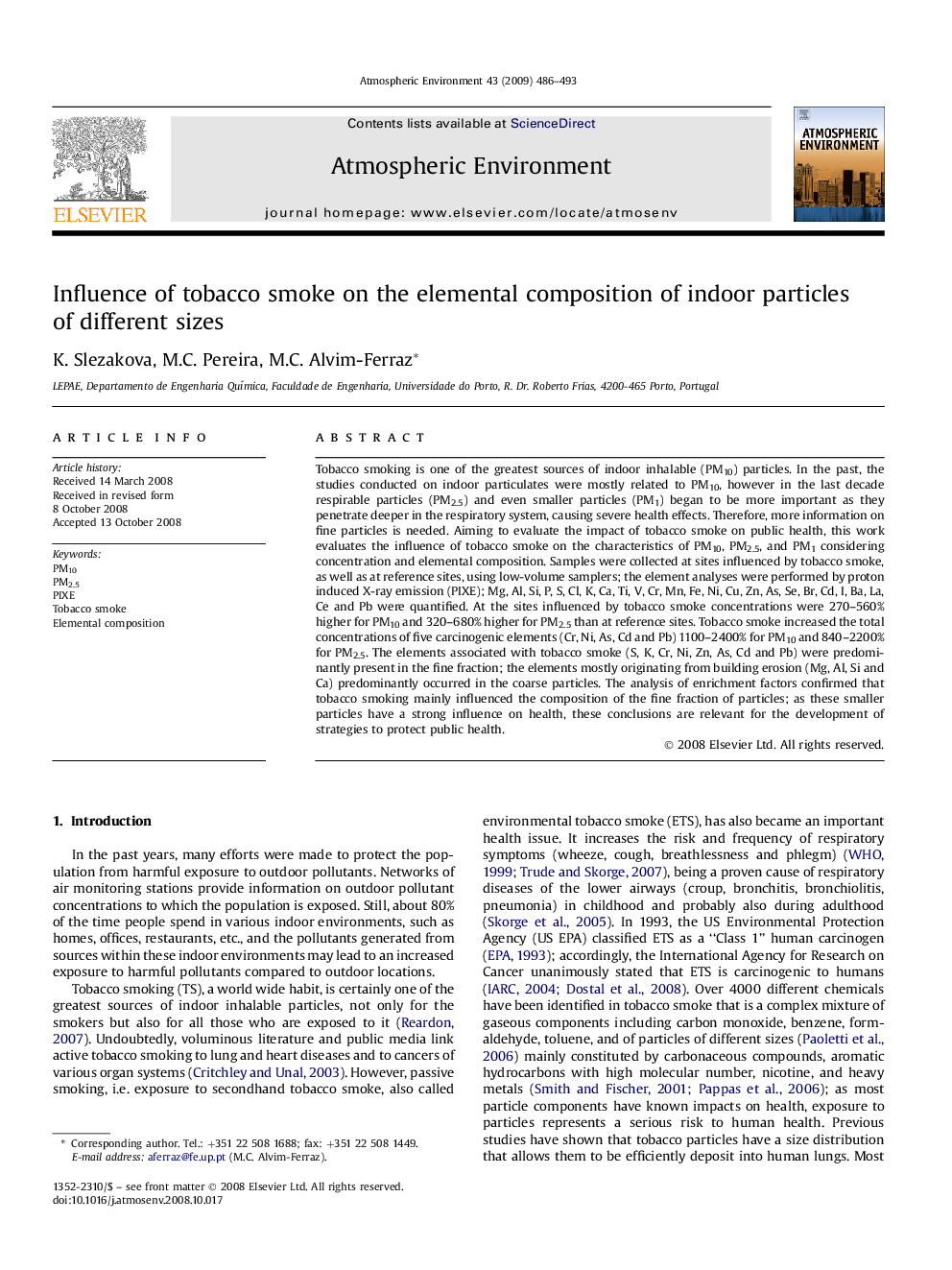| کد مقاله | کد نشریه | سال انتشار | مقاله انگلیسی | نسخه تمام متن |
|---|---|---|---|---|
| 4442277 | 1311145 | 2009 | 8 صفحه PDF | دانلود رایگان |

Tobacco smoking is one of the greatest sources of indoor inhalable (PM10) particles. In the past, the studies conducted on indoor particulates were mostly related to PM10, however in the last decade respirable particles (PM2.5) and even smaller particles (PM1) began to be more important as they penetrate deeper in the respiratory system, causing severe health effects. Therefore, more information on fine particles is needed. Aiming to evaluate the impact of tobacco smoke on public health, this work evaluates the influence of tobacco smoke on the characteristics of PM10, PM2.5, and PM1 considering concentration and elemental composition. Samples were collected at sites influenced by tobacco smoke, as well as at reference sites, using low-volume samplers; the element analyses were performed by proton induced X-ray emission (PIXE); Mg, Al, Si, P, S, Cl, K, Ca, Ti, V, Cr, Mn, Fe, Ni, Cu, Zn, As, Se, Br, Cd, I, Ba, La, Ce and Pb were quantified. At the sites influenced by tobacco smoke concentrations were 270–560% higher for PM10 and 320–680% higher for PM2.5 than at reference sites. Tobacco smoke increased the total concentrations of five carcinogenic elements (Cr, Ni, As, Cd and Pb) 1100–2400% for PM10 and 840–2200% for PM2.5. The elements associated with tobacco smoke (S, K, Cr, Ni, Zn, As, Cd and Pb) were predominantly present in the fine fraction; the elements mostly originating from building erosion (Mg, Al, Si and Ca) predominantly occurred in the coarse particles. The analysis of enrichment factors confirmed that tobacco smoking mainly influenced the composition of the fine fraction of particles; as these smaller particles have a strong influence on health, these conclusions are relevant for the development of strategies to protect public health.
Journal: Atmospheric Environment - Volume 43, Issue 3, January 2009, Pages 486–493